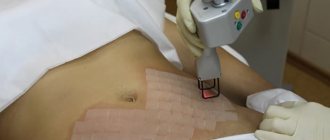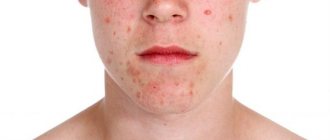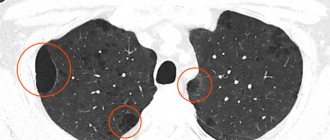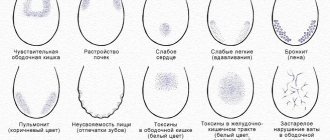Cracks on the feet are a partial violation of the integrity of the skin on the plantar part of the foot. They form more often on the heels; women are more susceptible to their occurrence. Deep cracks are unpleasant because they cause pain, take a long time to heal, and make walking and physical activity difficult. Like other injuries, they facilitate the penetration of pathogenic bacteria and fungi into the skin and are fraught with an infectious inflammatory process. Why do they arise?
Why are they formed?
Many people believe that only older people have cracks in their feet. Indeed, 25–30% of people over 40 have them. But they also occur in men, women younger than this age, and even in children.
The causes of cracks in the feet are a violation of the hydrolipid balance of the skin, a decrease in the production of collagen and elastin, and a decrease in the protective fat layer. Externally, this manifests itself in dryness, thickening, loss of elasticity, and firmness. Every day, the feet experience enormous pressure to support the body in a standing position, controlling balance when walking or running. With such a load, the skin inevitably stretches and expands. If it is dry and loses elasticity, then the likelihood of rupture when stretched under body weight will increase.
In addition to natural age-related changes, cracks in the skin of the feet are provoked by the following internal and external factors:
- wearing tight shoes;
- fungal infections, dermatitis;
- foot deformities, flat feet, heel spurs;
- poor hygiene, insufficient hydration or nutrition;
- skin contact with dry, hot air, salty sea or chlorinated pool water, ultraviolet rays;
- poor nutrition, leading to a deficiency of vitamins A, E, group B, and microelements important for skin health;
- endocrine disorders, including thyroid disease, diabetes;
- metabolic disorders;
- excess weight, which exposes the skin of the plantar part of the foot to excessive pressure and stretching;
- problems with blood circulation in the lower extremities, causing a lack of tissue nutrition;
- walking barefoot on hard surfaces (sand, stones, asphalt).
Cracks on the feet are a consequence of dry and thickened skin, or otherwise keratosis. Keratosis develops when keratinized or dead cells of the upper layer of skin do not have time to exfoliate and become layered on top of each other. In severe cases, the layer of thickened skin is 1–2 cm.
When to see a doctor
There are times when creams, masks and oils cannot correct the situation.
You should contact a specialist if:
- More than 7 days have passed since the start of self-treatment, but there is no positive dynamics.
- Tears in the heels are more than 1 mm deep - in such cases it is better to trust a doctor who will select adequate treatment.
- In the presence of diseases that cause cracks. For diabetes, hypervitaminosis or anemia, masks and creams will not help, and time for treatment will be lost;
For diagnosis, consultation and treatment, contact a doctor in one of the following specializations:
- Dermatologist – deals with skin diseases.
- Podiatrist – identifies and eliminates foot problems.
- The therapist is a generalist doctor who will collect information about symptoms and refer you to the right specialist.
About treatment by a doctor
If a disease is identified that caused the cracks to form, it will be treated. To restore the skin of the feet, it is likely that the doctor will prescribe the above methods and means. He will also recommend regularly resorting to hardware medical pedicure. The keratinized skin is cut down as deep as possible on the sides of the crack.
What are the symptoms of cracked feet and heels?
In addition to the obvious symptom of large cracks surrounded by a thick layer of dry, cracked, flaky skin, cracks in the soles of the feet cause pain when walking. The pain is localized in the area of damage, has a burning character, and intensifies with pressure. Some experience psychological discomfort, since such wounds, especially if there are many of them, spoil the appearance of the feet.
Cracks in the heels vary in depth and length. They can be single or multiple, on one heel or simultaneously on both. Usually it all starts with the appearance of dryness, hardening, and thickening of the skin along the edge of the heel. These areas look like calluses and are yellow, dark brown, or gray-white in color. At first, small cracks are visible. But if they are not treated and you continue to put pressure on the heel, they will deepen and begin to bleed.
In diseases that lead to a decrease in blood flow to the feet, there is a high risk of infectious complications, inflammation, and the formation of long-term non-healing ulcers.
Why do women's heels crack?
During pregnancy, women often experience cracked heels, which is associated with increased weight and stress on the feet. During this period, the legs also become swollen and varicose veins may develop. All this also provokes deformation of the epidermis.
However, such situations occur not only during pregnancy. So why do women's heels crack so much more often? The answer has to do with the choice of shoes. If the shoe has a synthetic insole or high heel, or is narrow and uncomfortable, the result will be damage to the skin. Also, summer shoes—flat sandals—have a negative impact on your heels. When walking, the back of the sandal hits the heels, causing damage.
How to treat cracked feet?
To restore the skin, comprehensive treatment by a podologist is necessary, including:
- finding out the cause of cracks in the feet;
- proper care;
- selection of softening, nourishing ointments, foot creams for cracks;
- foot baths, paraffin therapy;
- keratolytic agents for removing dead skin;
- hardware pedicure.
Often cracks in the feet are the result of problems within the body. For example, endocrine, vascular or nervous disorders, lack of vitamins and minerals. It is important to establish and, if possible, eliminate the causes of cracks in the feet at the beginning of treatment. This will make it easier to restore healthy skin structure and help prevent the formation of new breaks in the future. If cracks in your feet appear regularly, you need to check your health.
One of the main treatments is hardware pedicure.
This is a safe method that:
- removes keratinized areas without injury;
- will thin out the hard edges of cracks;
- will accelerate tissue regeneration;
- will make the skin softer and more elastic.
It is recommended to perform the procedure regularly, once every 3 to 4 weeks.
To treat cracks in the feet and soles of the feet, paraffin therapy and foot baths are used as auxiliary means. Paraffin creates a film on the surface of the skin that provides protection and hydration. Baths help soften rough skin, but the possibility of their use and composition should be discussed with a doctor, since they are not always permitted.
To care for the skin, nourishing, moisturizing, and healing creams for cracks in the feet are applied several times a day. There are reviews of such products from different companies on the Internet, but you need to choose them on the advice of a doctor. In difficult cases, it is recommended to buy ointments and creams for cracks in the feet with a healing, anti-inflammatory, antiseptic, and regenerating effect. For infection, antibacterial or antifungal therapy is used depending on the type of pathogen.
If the layer of rough, dry skin is too thick, spreading over large areas of the foot, products with retinoids and keratolytics are used. They remove dead skin particles and accelerate its renewal.
The composition of keratolytic ointments includes:
- urea;
- salicylic, lactic acid;
- alpha hydroxy acids;
- fruit acids.
With deep cracks, you need to temporarily limit walking and playing sports to reduce the pressure and friction that is exerted on the injured area. If it is not possible to limit physical activity, orthoses, instep supports, insoles or patches are used. They help redistribute the load and protect the problem area.
Criterias of choice
When choosing a foot cream with a healing effect, you should pay attention to the following criteria:
- Therapeutic effect. Give preference to products that provide a softening and wound-healing effect. Nourishing and protective creams are also suitable.
- Hypoallergenic.
- Compound. It's better that it be natural.
- Best before date.
- Mode of application. Read the instructions on the package. Some types of creams require pre-treatment of the skin to obtain maximum effect.
Important components of products for eliminating dry skin and treating damage to the heels are the following:
- Essential oils of jojoba, shea, lavender and coconut. They nourish and moisturize the dermis.
- Urea and salicylic acid. These components prevent the formation of corns, cracks and calluses.
- Propolis. Creates a protective film that retains moisture in the dermis and prevents the effects of external factors.
- Keratin, aloe, calendula extract. Accelerate the restoration of the epidermis and the healing of abrasions.
- Betaine. Softens the skin, nourishes it with moisture, eliminates redness and irritation.
- Vitamins.
- Panthenol. Deeply nourishes the dermis and accelerates the healing of cracks.
- Glycerol. Restores hydrobalance, heals damage, has a moisturizing effect.
Please read the packaging carefully before purchasing. Pay attention to the date of manufacture and expiration date. Also find out how hypoallergenic the product is.
Our feet rest during the night, so this is the ideal time to apply crack creams.
How to warn?
If you have dry feet, the likelihood of cracks is high, so take care of their prevention.
What do we have to do?
- visit a podiatrist once a month for hardware treatment of the skin of the feet, removal of potentially dangerous areas - thickenings, corns, calluses where tears form;
- take care of a complete diet with sufficient vitamins and minerals;
- Every day after washing your feet before going to bed, apply moisturizing and nourishing creams to the skin of your feet;
- regularly massage your feet to improve blood circulation and metabolic processes;
- control weight;
- use special insoles, arch supports, orthopedic shoes if you have flat feet or other foot deformities;
- periodically treat feet with pumice stone and fine abrasive to remove dead cells.
If cracks appear, you should not try to eliminate them yourself, as this can worsen the situation and lead to complications. A competent approach is important here, which includes not only the treatment of cracks in the feet, but also an analysis of possible causes and recommendations for preventing relapse. If you encounter such a problem, contact a podiatrist. This is a specialist who specializes in treating diseases of the nails and skin of the feet.
1 0
Causes of heel pain
The heel is the part of the leg that bears a tremendous load. At a young age, it hurts, usually after an injury. In the elderly, this is facilitated by the loss of elasticity of tissues and their pathological fragility.
There are circumstances in which heel pain should not be a cause for concern. This happens, for example, after a long walk:
- if the unusual load occurred against the background of physical inactivity;
- when wearing uncomfortable shoes;
- after a long climb uphill or up stairs.
If after a long walk the sensations in the heel are too painful and sharp, swelling, hematoma, tissue hyperemia has appeared, it’s time to think about it. Most likely, the leg needs medical attention.
A little pain in the heel after a long walk is normal.
Tests and diagnostics
A dermatologist or podologist conducts a survey of the patient and an external examination, during which this condition is easily determined. It is recommended to consult a doctor if no visible improvement is observed after a week of self-treatment. You should also definitely consult a specialist if the tears are more than 1 mm deep.
If the appearance of cracks is associated with other diseases, additional consultations with specialists, as well as the necessary studies, are prescribed if necessary.
General information
At a certain period of life, many people experience such a nuisance as cracked heels .
This manifestation is not only a cosmetic defect, but also often provokes discomfort and pain. Cracks are a linear violation of the integrity of the skin due to a decrease in its elasticity and firmness. In addition, such a defect increases the risk of developing infectious processes. And deep cracks can be a prerequisite for the development of serious pathologies. Therefore, it is very important not to ignore such manifestations and not to allow small cracks to turn into deep ones. There are a number of methods that are effective for such manifestations. But in order to get the desired effect, it is first necessary to determine the cause of cracked heels. Why cracks appear, what needs to be done to make the heels smooth, and what folk methods can be practiced in this case - this will be discussed in the article.
Classification
Depending on the characteristics of the disease, there are two types of cracks:
- Superficial (epidermal) - they develop within the epidermis and, healing, disappear without a trace.
- Deep (epidermal-dermal) - develop in the upper layers of the skin, localized in the epidermis and dermis. After the cracks have healed, scars may remain. Very often, deep formations cause pain and bleed. Bleeding formations are called ruptures.
Treatment with folk remedies
It makes sense to know how to treat cracked heels with folk remedies, since such methods can help to quickly cope with the problem. In addition, using folk remedies, you can effectively moisturize the skin of your feet. The following methods may be effective:
- Onion compress . Chop the onion, wrap it in a napkin and apply it to your heels overnight, fixing the compress. Before the procedure, it is recommended to steam your feet in water with soda. In the morning, wash your feet by rubbing your heels with a pumice stone. After this, apply ointment.
- Herbal baths . It is very useful to take baths from decoctions of various herbs. You can also prepare a mixture of herbs for baths. Chamomile, mint, nettle, sage, calendula, etc. are suitable for this purpose. You need to take 2 tbsp. l. selected raw materials, pour 1 liter of boiling water and leave for an hour. Pour the infusion into 3 liters of warm water, add 1 tbsp. l. soda and 3 drops of ammonia. Keep your feet in the bath for 30 minutes. After this, you should lubricate your feet with vegetable oil.
- Apple puree . It is applied to the feet, previously cleaned with pumice. The compress must be fixed and left for at least an hour. After the procedure, the feet are lubricated with a rich cream.
- Product with propolis . Fry the onion in 200 ml of vegetable oil. Next, 100 g of propolis and wax are added to the strained oil. When everything has dissolved over low heat, wait until the product cools well. Apply to feet every day.
- Sea buckthorn oil . It should be applied to the heels in a thick layer at night. In this case, you should put on socks and wrap your feet with a cloth, as sea buckthorn oil can stain the bed.
- Moisturizing cream . You should mix a tube of baby cream with oils, adding 5 drops each of lavender oil and tea tree oil. Before applying the cream, treat your heels with pumice. It is better to apply the cream at night.
Prevention
To prevent the development of ruptures in the feet, it is necessary to adhere to the following rules of prevention:
- Always wear high-quality, comfortable shoes that fit well.
- Do not overuse tanning to avoid drying out your skin.
- Do not overdo it with peeling, use moisturizing creams regularly.
- Don't wear open shoes too often.
- Eat right, add more fruits and vegetables to your menu.
- If the skin on the feet is very dry, regularly take warm baths with soda and use other moisturizing methods.
- If cracks form on your feet, consult a doctor.
During pregnancy
During pregnancy , the load on the legs increases significantly. In addition, hormonal changes and general changes affect the general condition of the body. As a result, the risk of cracking increases. They appear especially often in late pregnancy.
The expectant mother should consult a doctor about treatment methods. You can use folk remedies - baths, compresses, etc. The doctor may also recommend a vitamin-mineral complex, ointments, creams, etc.
Diet
Diet for skin diseases
- Efficacy: therapeutic effect after a month
- Time frame: three months or more
- Cost of products: 1400-1500 rubles per week
Nutrition is one of the important factors for skin health. Therefore, a lack of certain substances in the body, in particular vitamins A , E , etc., can lead to similar problems. To avoid them, the menu should include the following products:
- Fatty fish, liver, greens, carrots - to prevent vitamin A .
- Dairy products, nuts, cereals, eggs, vegetables, fruits - to provide sufficient amounts of B vitamins .
- Citrus fruits, sauerkraut, rosehip drinks are sources of vitamin C.
- buckthorn , seafood are sources of vitamin E.
- Bran, legumes - to provide the body with vitamin H.











